From concept to clarity with AI diagram generator
Skip the manual work with diagramming AI in Miro

How Miro AI diagram maker helps you visualize faster

Accelerate complex system mapping
Building flowcharts, ERDs, mind maps, UML sequence diagrams, and UML class diagrams manually is time-consuming and delays stakeholder feedback. With Miro's AI diagram generator, you can quickly visualize business processes, database relationships, and system architectures across various diagram types. Need a second opinion on your diagram structure? AI Sidekicks act like specialized teammates right on your board, providing contextual advice as you build.

Seamless conversion from text to diagram
Our cutting-edge AI diagram maker empowers you to convert written descriptions directly into editable diagrams. This eliminates ambiguity, ensuring that your initial visual interpretations align with the intended workflow, data structure, or system design right from the start.

Design together, instantly
Engineers, product managers, and architects often work in silos during the initial planning phase, leading to disconnects down the line. Once your diagramming AI generates initial visuals, they live on a shared Miro board. Teams can provide real-time feedback, add comments, and iterate together, ensuring everyone understands the system architecture or process flow before implementation begins. This creates shared understanding and reduces costly rework.

Intelligent iteration and refinement
Miro's AI diagram generator doesn't stop at creation. The AI assists in refining layouts, suggesting diagram elements, and maintaining visual consistency as you iterate. This allows you to truly use diagramming AI in a dynamic, intelligent way, freeing you to focus on crucial system design enhancements and process optimizations.
Canvas as the prompt advantage
What sets Miro apart is our unique Create with AI capability, where your existing board content can serve as the prompt. Sketch rough ideas, add sticky notes with requirements, or import reference materials onto your canvas, then use our AI diagram maker to transform these scattered thoughts into structured diagrams. This seamless integration between ideation and visualization accelerates your entire planning workflow.
Design without the learning curve
Miro's intuitive interface, combined with the power of our diagramming AI, makes diagram creation accessible to everyone on your team. Product managers, business analysts, and even non-technical stakeholders can contribute to and understand system diagrams, database schemas, and process flows. Plus, with Flows, you can automate repetitive diagramming tasks and create custom workflows – no coding required.
Integrated with your favorite tools
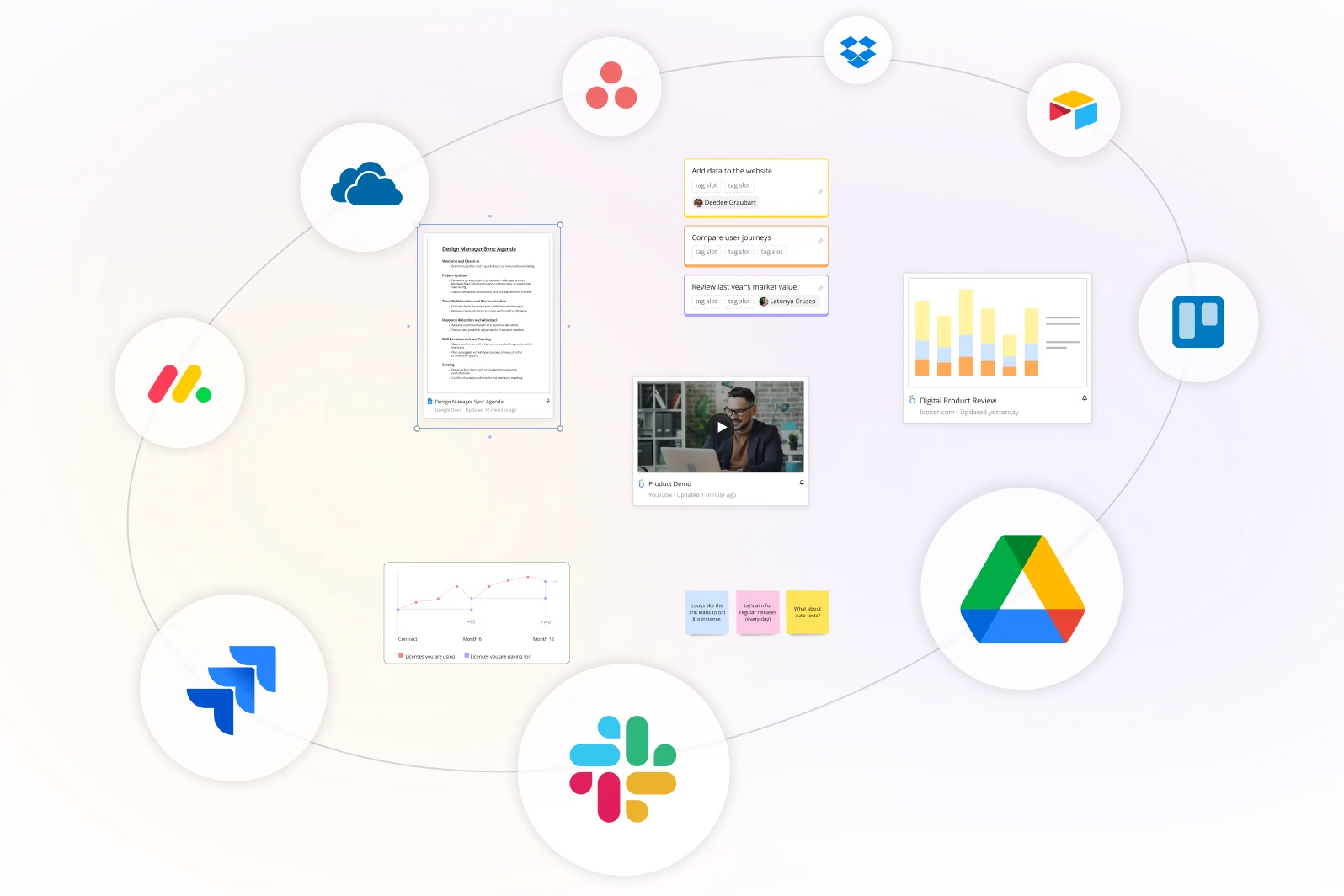
Related templates
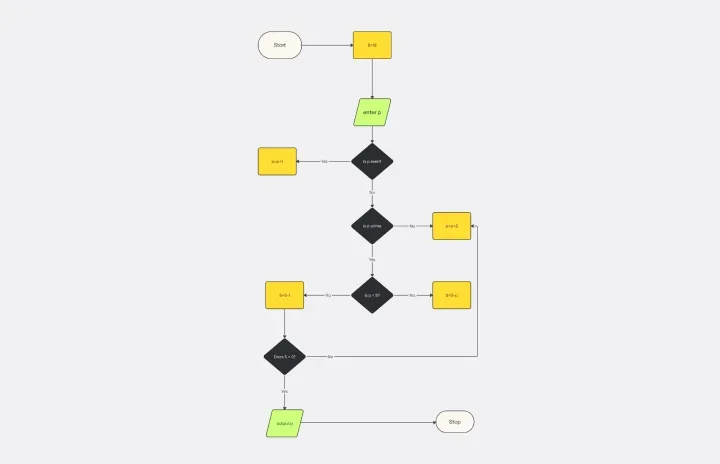
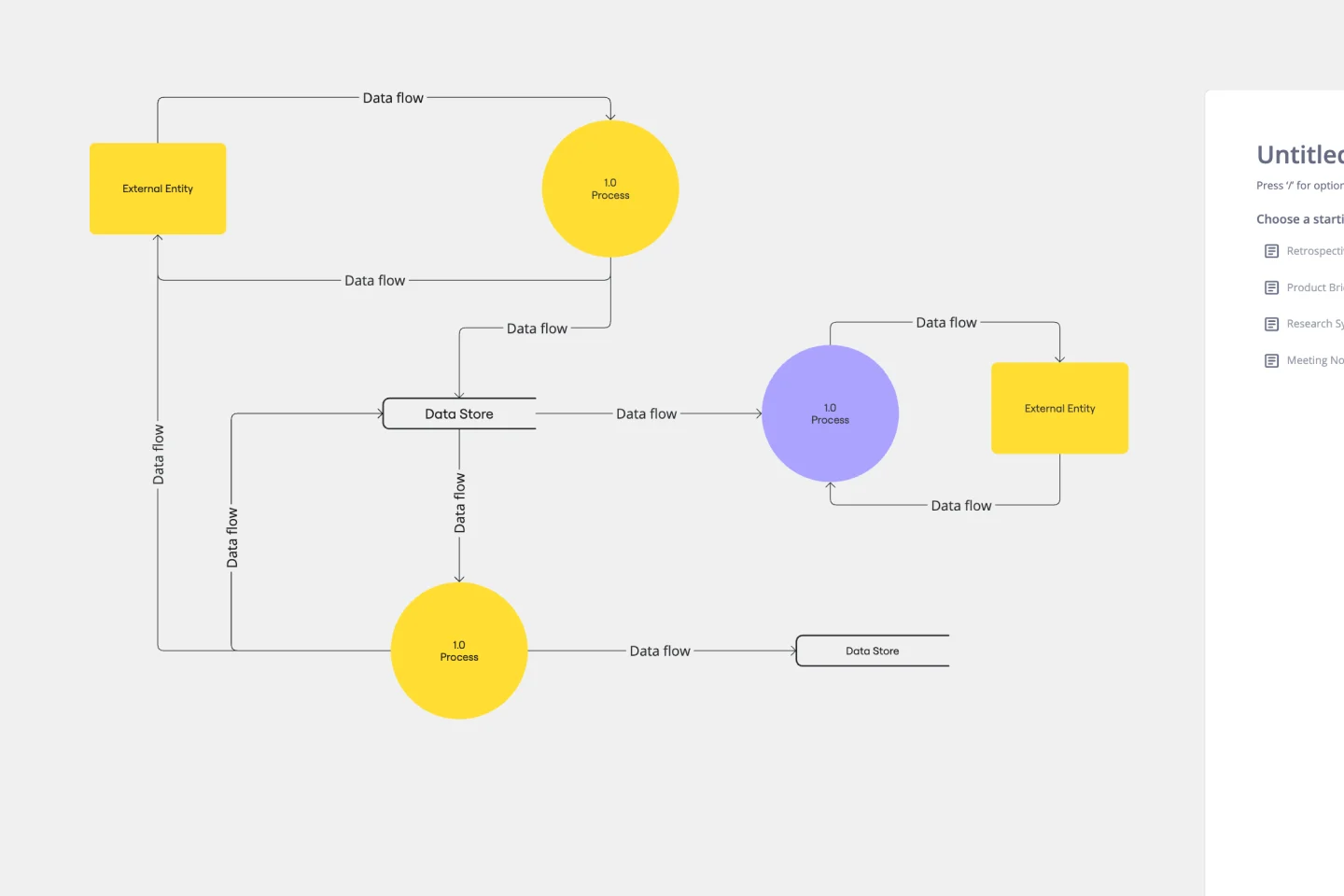


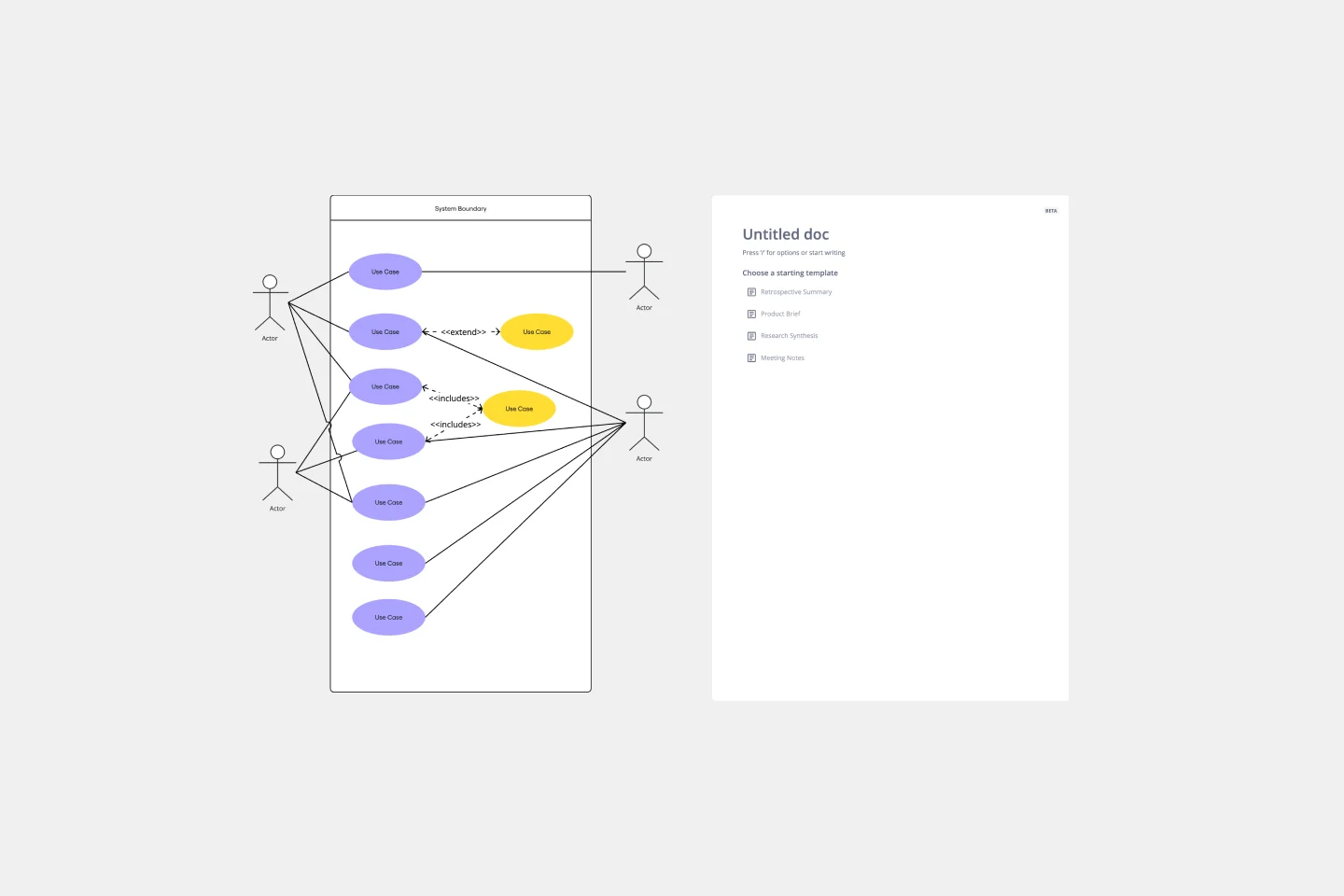
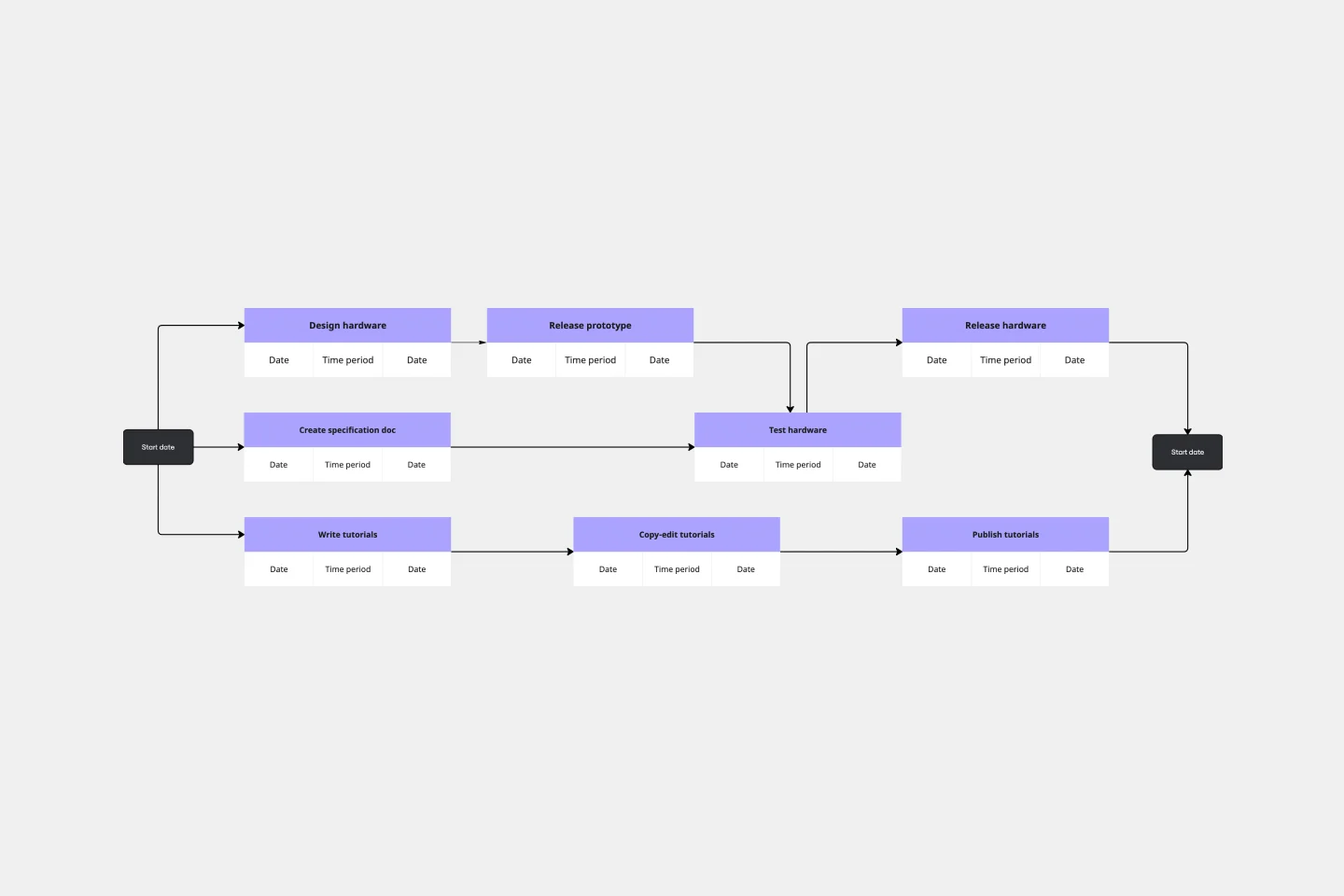
How to use our AI diagram maker in Miro
Invite others to view and leave comments on your Miro board for feedback, embed your diagram into Confluence or thousands of other websites and tools, or record a Talktrack — among plenty of other ways to share your work.
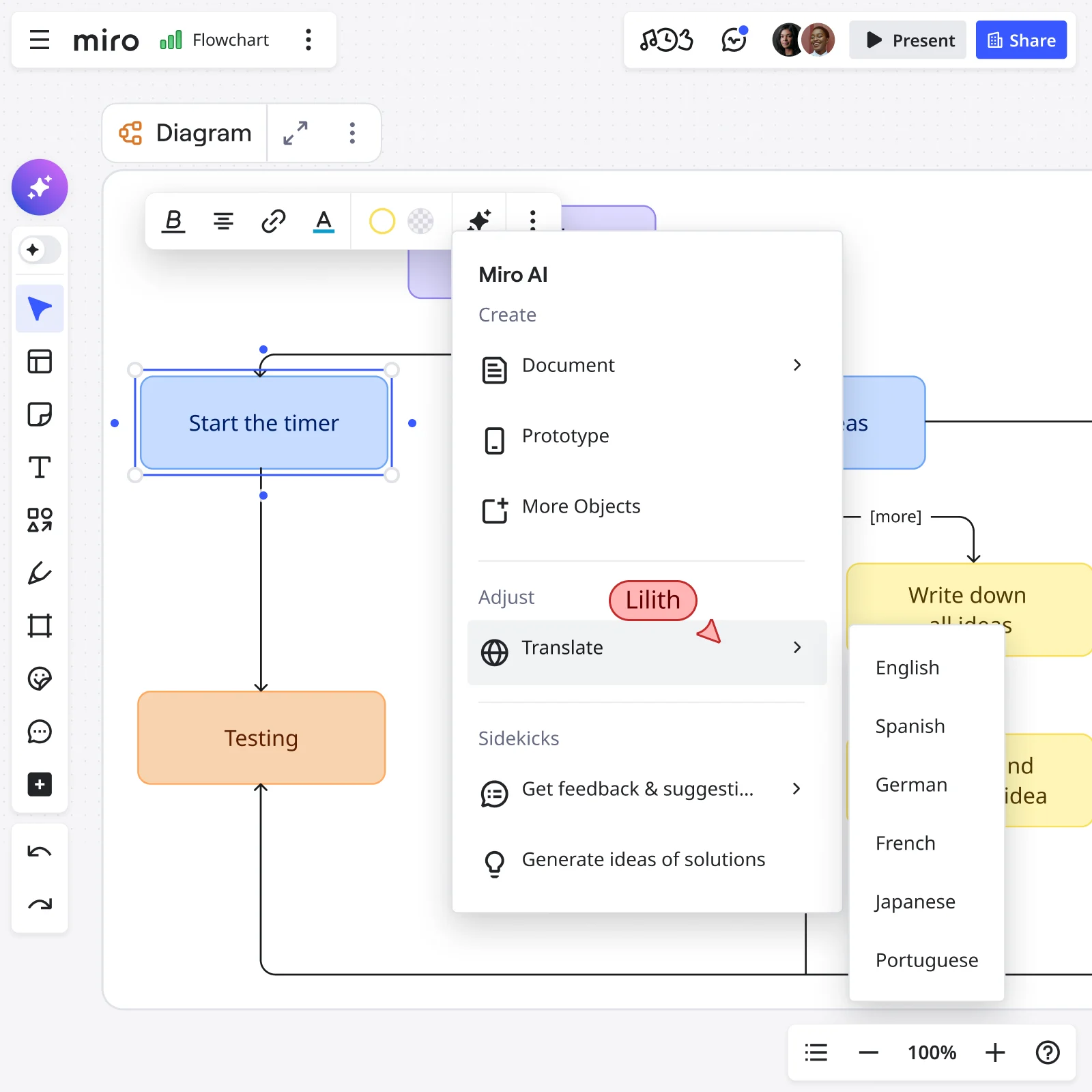

The world's most innovative companies are collaborating in Miro, everyday
“Having these new AI capabilities and connecting with platforms like Google Docs and Jira will massively speed up the delivery process.”
Clyde D’Souza
Senior Software Engineer at Xero

"We've seen many AI use cases but none as sophisticated as AI Sidekicks. Reading through your stuff and then helping you with it is absolutely new. It's really, really powerful."
Joe Dunleavy
Global SVP, Head of AI Pod at Endava
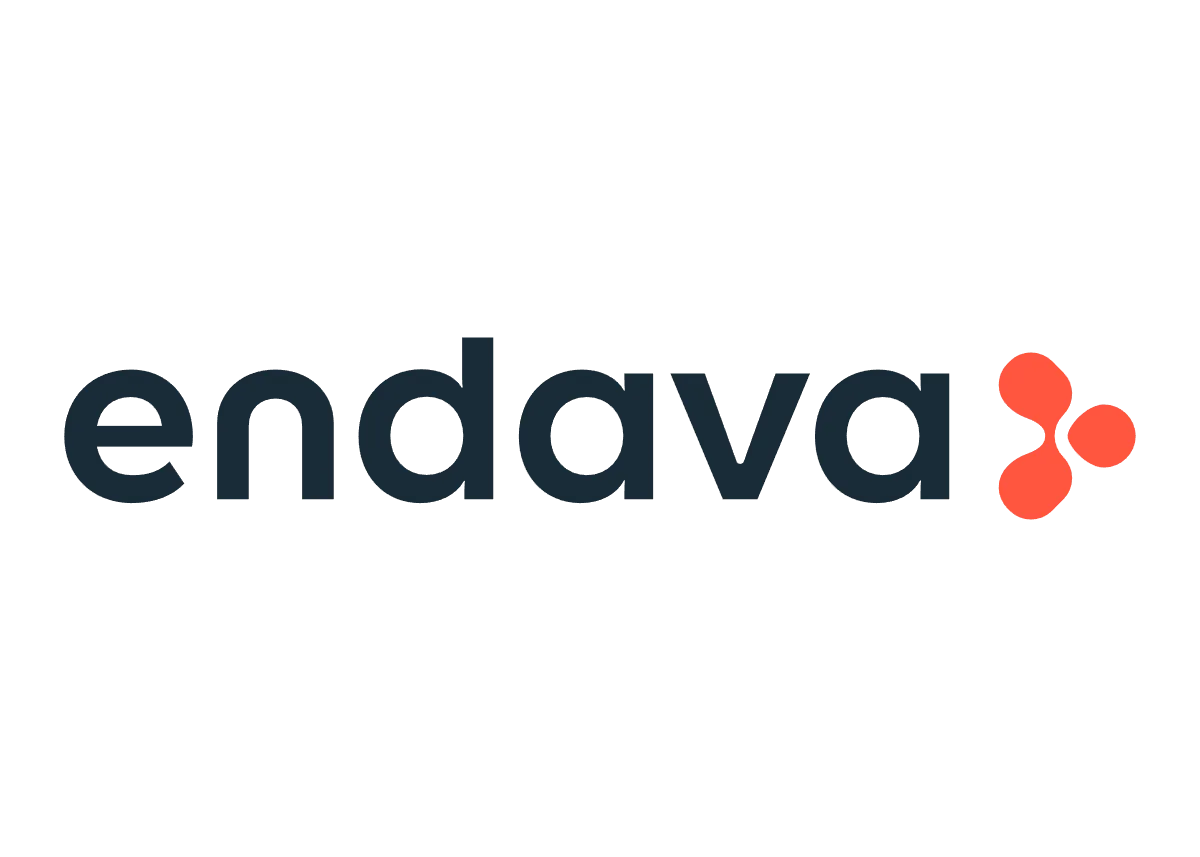

"I love the AI-generated Product Brief feature. From my perspective, Product requirements are an area where AI will increasingly support product managers, helping them save considerable time. The idea that this task can be done directly in Miro, leveraging all the discovery insights that are already in the board is brilliant and certainly a time-saver."
Sandrine Veillet
VP of Global Product at WebMD


"The Product Marketing Alliance Sidekick is a game-changer. It empowers users to collaborate seamlessly, make informed decisions faster, and solve complex challenges with greater accuracy."
Richard King
Founder and CEO of Product Marketing Alliance


AI diagram generator FAQs

Can I make other diagrams using Miro AI?
Absolutely. Use Miro AI to create flowcharts, ER diagrams, UML sequence diagrams, and UML class diagrams. You can also kickstart your next diagramming project using one of our many customizable diagramming templates.
Can I edit the diagrams generated by the AI diagram maker?
Absolutely! All diagrams generated by Miro's AI diagram generator are fully editable. You can adjust, customize, and refine every element just as you would with any other object on your Miro board. Add new connections, modify shapes, change colors, or expand sections as needed.
Does the diagramming AI support both technical and business diagrams?
Yes! Our AI diagram maker is designed to support a wide range of diagram types, including flowcharts for business processes, ERDs for database design, mind maps for brainstorming, UML sequence diagrams for system interactions, and UML class diagrams for software architecture. The AI adapts to the context and type of diagram you need.
Is my data secure when using the AI diagram generator?
Yes, Miro maintains enterprise-grade security standards for all AI features. Your diagram content and prompts are processed securely, and we follow strict data protection protocols. Miro is SOC 2 Type II compliant, ISO 27001 certified, and GDPR compliant. Data used with our diagramming AI is not used to train external models, ensuring your proprietary information remains confidential.
Is the AI diagram generator accessible to users with disabilities?
Miro is committed to accessibility and follows WCAG 2.1 AA guidelines. Our AI diagram maker generates diagrams that maintain proper contrast ratios, support keyboard navigation, and work with screen readers. Generated diagrams include alt text and proper semantic structure to ensure they're accessible to all team members.
How does the AI diagram generator improve team collaboration?
By automating the initial diagram creation, the diagramming AI ensures teams can start with a clear visual foundation sooner. This shared starting point, combined with Miro's real-time collaboration features, fosters better communication, allows for immediate feedback, and helps align stakeholders faster around complex systems and processes.
Does the AI diagram maker integrate with my existing tools?
Yes. Miro integrates with over 130 tools including Jira, Confluence, Azure DevOps, Slack, Microsoft Teams, and more. You can import requirements from your project management tools to generate diagrams, then export or sync completed diagrams back to your documentation platforms. This ensures your AI-generated diagrams fit seamlessly into your existing workflows.
Can I share diagram templates with my team or the Miro community?
Yes! Once you've created diagrams with our AI diagram generator, you can save them as templates for your team to reuse. You can also publish templates to Miroverse, our community template library, where millions of users discover and share visual collaboration resources. This helps establish consistent diagramming standards across your organization and contributes to the broader Miro community.